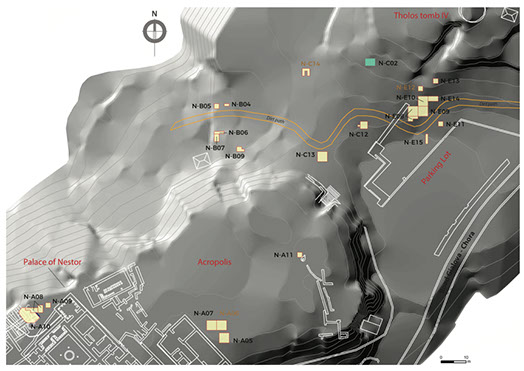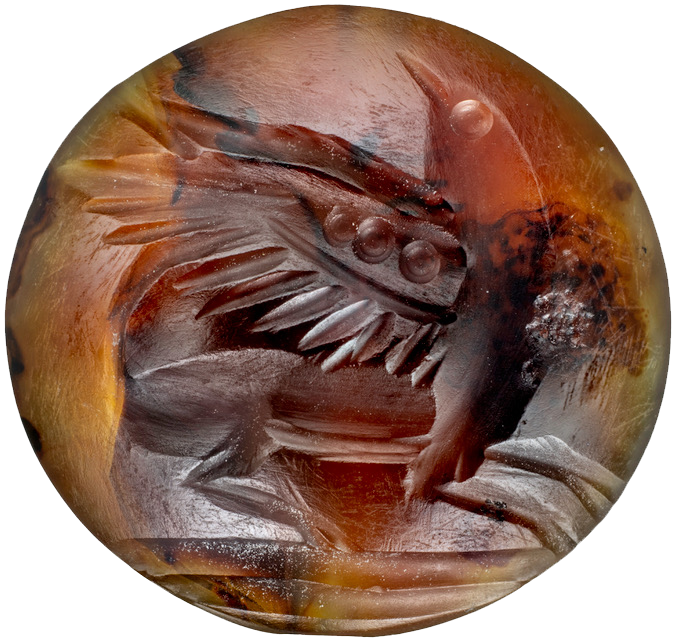Acropolis
In 2017, the project excavated two areas of the acropolis, which is located beside the palace on the same hill.

In Mycenaean times, the wealthy elite would have lived just beside the palace in the acropolis.
This area was originally excavated in the mid-20th Century, but we returned to certain areas of it in 2017 to reexamine them with new perspectives. In relation to the rest of the acropolis and the scale of the palace, these were two relatively small portions of the site.
Northwest of the Main Building
Overview
The two-storied main building of the palace contains the principal entrance to the site along with two shaded porches, a courtyard, a throne room, and multiple additional storage rooms and corridors. In the archives complex, a suite of two rooms beside the gateway, Blegen and his team discovered one thousand clay tablets and fragments inscribed with Linear B script.
1962
In 1962, William G. Kittredge was assigned the task of exploring an extensive area in the northwest edge of the acropolis by the Main Building. He had two goals: to determine if there were additional sections of the Early Mycenaean fortification wall in that area and to search for outlying frescoes near what had become known as the Northwest Frescoe Dump. In addition to finding plaster connected to the Dump, he and his team uncovered forty walls and five drains which belonged to four principal phases of construction that predated the final palace. They also found pits filled with burnt animal bones.
2017
We worked in an area east of Kittredge’s work that had not been previously excavated. There we found, among other items, a fragment of a Linear B tablet and a small pit of burnt animal bones, which was similar to those Kittredge had found elsewhere.
Southeast of the Northeast Building
Overview
The last Mycenaean addition to the palace complex was the Northeastern Building, which was built on a rubble foundation using crude brick in a heavy wooden framework. One of the most notable aspects of the building is its U-shaped water channel. This is the end of an aqueduct that carried water 1 km to the palace from a spring that still exists to this day.
1959
Marion Rawson and her team were the first to excavate the acropolis near the Northeastern Building. In the area outside of room 99, this work provided some insight into the fire that destroyed the palace. They found stones in no particular order on a layer of black soil that contained worn pottery and pieces of mudbrick. These were resting on what would have been the ground at the time of the destruction of the palace.
2017
In 2017, we opened two other trenches farther to the southeast, also outside room 99, in part to try to relocate and reexamine the destruction horizon. One of these intersected Rawson’s trench. In all cases, in our trenches, like MY, we encountered a dense layer of stones, black soil and pottery (including partially mendable cups of Coulson’s DA III/LG). Once removed, the stones were found to be lying on a Mycenaean surface immediately above bedrock, marked by a thin level that contained, among earlier remains, sherds of the final Mycenaean palace period.
